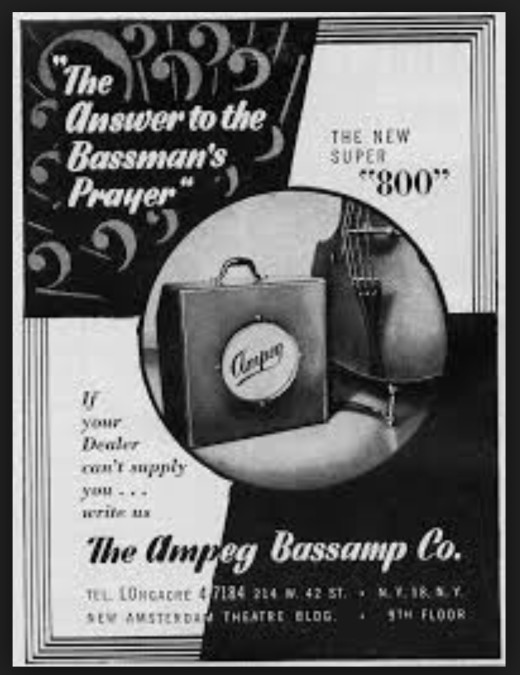-
29Oct2015
- share:
Fender Bassman Amp- 500 Words with Adam P Hunt
500 Words Fender Bassman
If the real thing don’t do the trick, no You better make up something quick You gonna burn, burn, burn, burn, burn it to the wick Oooo, Barra-Barracuda
– Heart, Barracuda
Chug chugga chug chugga chuch chug … whaaaaa… pew! Didjyaknow the opening riff for Heart’s 1977 classic rock song “Barracuda” was played with a Telecaster and a ’56 Fender Bassman?
Yeah, I know, crazy, right?
But that perfect blend of snarl, grit, and rock ‘n’ roll attitude was probably the last thing Leo Fender had in mind when he produced the first 5B6 Bassman back in 1952. While there were some extremely primitive small-scale production amps that predate Fender’s Bassman the Bassman was a giant step forward in bass amplification.
Ampeg beat Leo to the punch by introducing an 18watt amp with a single 12” called the Super 800 in 1951 and a year later they introduced a more powerful 20watt version with a single 15” speaker. 
Feel the power!
Fender’s original 5B6 Bassman was also a low powered affair that sported a single 15”. By some accounts the 5B6 Bassman was not a staggering success. The combination of a single 15” speaker and an underwhelming 26watts of power lead to a murky and distorted tone with the 5B6 so something needed to change.
Leo and designer Freddie Tavares went back to the drawing board and in 1954 produced the much-improved 5D6. The 5D6 was a radical departure from the earlier 5B6 because it now used four 10” speakers rather than a single 15” and increased its wattage dramatically.
Additional improvements were added to the 1957 model that included three tone controls and in the 1958 version that included a presence control.
When Jim Marshall was approached by Pete Townshend to get a louder amplifier Jim Marshall looked to the 5F6-A Fender Bassman for inspiration.
While there are obvious differences between the earliest Marshall JTM45s and the Bassman (different power tubes, modified feedback circuit, completely different speakers) the Bassman somewhat fell out of favor with guitar players.
But not with everyone felt the Bassman’s best days were behind it. Buddy Guy’s piercing aggressive sound comes as much from his Strat as it does from his trusty ’59 Bassman.
Any one familiar with the body of Buddy’s work are familiar with his ability to go from sparkling cleans to face melting blasts of sonic mayhem and the Bassman was right there behind him.
When Fender eventually replaced the 5F6-A with the so-called “piggy back” models the Bassman went through some dramatic changes. Most of all the Bassman went from being a combo amp to becoming a separate head and speaker configuration and circuit changes were made to give it a clearer sound.
Fortunately for “tweed” fans Fender reintroduced the Bassman in its earlier configuration. For those with deeper pockets both Victoria Amps and Valve Train make tweed Bassman inspired amps too.
If you want a wild ride jack into a “tweed” Bassman, crank it up, and hang on, it’s an experience fo’ su’.
